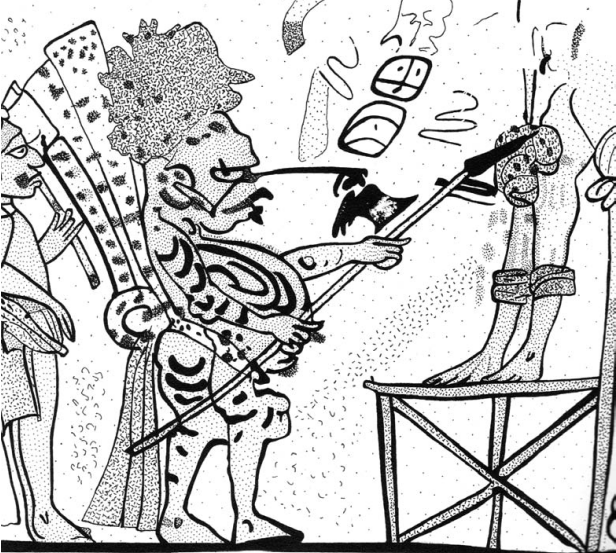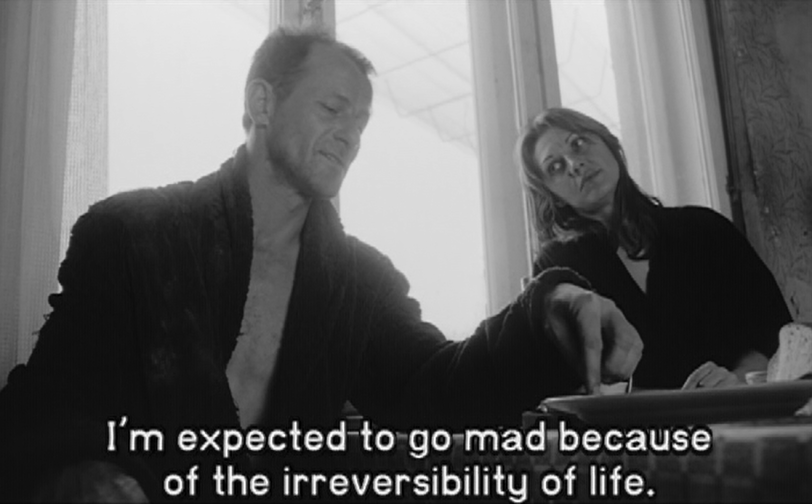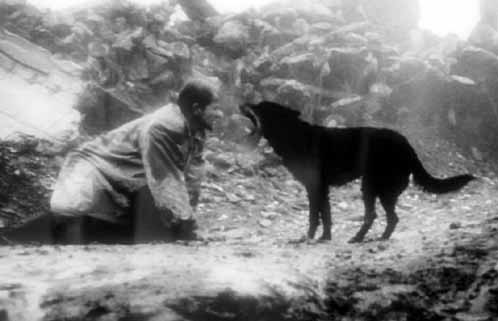- Georg Simmel’s Philosophy of Money: An Introduction
- Georg Simmel’s Philosophy of Money: 1. Value and Money
- Georg Simmel’s Philosophy of Money: 2. The Value of Money as a Substance
- Georg Simmel’s Philosophy of Money: 3. Money in the Sequence of Purposes
- Georg Simmel’s Philosophy of Money: 4. Individual Freedom
- Georg Simmel’s Philosophy of Money: 5. The Money Equivalent of Personal Values
- Georg Simmel’s Philosophy of Money: 6. The Style of Life
Simmel’s theme has now been firmly established: the “unconditional interchangeability” of money, and how in making incompatible value sets commensurable, it calls into question all positions of absolute value. Anything that has a price holds relative value to everything else with a price, by definition. And the ultimate unit of value, that of money itself, has no intrinsic value whatsoever. And as our labor and lives are quantified by monetary value, humans are also becoming like money, indistinguishable in number; independent and flexible at the cost of the loss of a fixed and specific identity. This is not a consequence of capitalism, but of modernity. A controlled socialist economy would require equal if not greater efforts to measure and compare the values of resources. For Simmel, socialism will ultimately pose a greater threat to incommmensurable values than even capitalism, purely because of the greater degree of top-down control. This doesn’t make Simmel any sort of libertarian, because his arguments have no roots in notions of rights or property. Rather, he sees capitalism’s disorganization as relaxing some of the stranglehold that money’s value has on life itself, at least compared to socialism.
Having established how life now appears to the person embedded in a national or global monetary economy, Simmel pushes further into the mind of the modern, asking what effect such a transition has on an individual’s notion of value, moral or otherwise. Unsurprisingly, he finds them being commodified as well, but the question is: what does it mean for personal values to be commodified?
Simmel points out a paradox here, which is that even as money has become a universal form of value, society has moved away from placing a monetary value on one particular thing: a human life. Feudalism and slavery treat humans as chattel, almost in place of money. (This, indeed, formed the basis of Eugene Genovese’s uncomfortable and dubious arguments for a sort of Southern socialism, in which capitalism is replaced with a kind of paternalistic feudalism.) Simmel does not touch directly on the United States or slavery, but his invocations of feudalism make the comparison inevitable.
The medieval prohibitions upon taking interest rest on the assumption that money is not a commodity. On the contrary, money was considered to be inflexible or unproductive and therefore it was deemed a sin to demand a price for its use as one would for the use of a commodity. During the very same period, however, it was considered not in the least sinful to treat a person as a commodity. If one compares this standpoint with the practical and theoretical notions of modern times, then it becomes clear how the concepts of money and of man move continuously in exactly opposite directions; the oppositeness of the directions remains the same, however, whether the concepts, with reference to a specific problem, develop towards or away from each other.
Simmel’s arguments are elliptical and difficult here, one of the reasons it has taken me so long to parse this chapter. They are not as central to his main thesis, but these arguments are some of the most visceral and painful, because he has moved beyond examining the modern world into an examination of how society has historically valued people, and the answers are extremely ugly. No more so than when, after considering feudalism, he moves on to how value has been placed on women, for women have had monetary prices placed on them in multiple societies throughout history.
There is no doubt that this businesslike attitude completely suppresses the individuality of the persons and their relationships. And yet the organization of marriage affairs as found in marriage by purchase signifies considerable progress when compared with the more brutal conditions of marriage by robbery or of completely primitive sexual relationships which, although not completely promiscuous, were none the less probably carried out without that stabilizing norm that was supplied in the socially regulated purchase of a wife. Time and time again, the development of mankind reaches stages at which the suppression of individuality is the unavoidable transitional point for its subsequent free development, at which the mere externality of the determinations of life favours spiritual growth, at which oppressive formation results in a reservoir of forces that later emerge as personal quality. Viewed from the ideal of fully developed individuality, such periods certainly appear to be brutal and undignified. However, they not only plant the positive germs of later higher development, but are in themselves manifestations of the spirit in its organizing control of the material of fluctuating impulses, activities of specifically human expediency that creates for itself, no matter how brutal, extraneous, or even stupid, the norms of life instead of merely receiving them from natural forces. Nowadays there are extreme individualists who are none the less in practice adherents of socialism because they consider socialism to be the indispensable preparation and even the severe training for a purified and just individualism. Thus the relatively stable order and external standardization of marriage by purchase was a first, very violent and eminently non-individual, attempt to give a certain mould to the marriage relationship which was just as appropriate for primitive stages as the more individualistic marital form is for more highly developed stages.
What I take Simmel to be saying here is that the by putting a price on a bride, society assigns a certain agreed-upon value to the female gender. The price may vary from woman to woman, but it’s significant that there is a value. A man who says that a woman is worth nothing is, as such, opting out of a society. rooted in family. For the reasons given in the previous four chapters, this de-individualizes and dehumanizes the woman, by virtue of making her easily comparable in worth to other women and to other commodities. However, Simmel points out that this is a deficit only if the incommensurate value of being a woman was already substantive. And here he finds evidence that often enough, it wasn’t. Ironically, placing a (high) purchase price on a woman may result in better treatment than if she is seen “merely” as a female human. Now, a man may say, she is not just a female–she’s worth 30 sheep! Simmel concludes, “the degradation and humiliation of human value decreases if the purchase prices are very high.” There are similar situations in the case of slavery: the higher the price of a slave (or the more difficult to replace), the more likely a slave is to receive non-lethal treatment at the hands of their master. Congress’ banning of the importation of slaves in 1808 resulted in a significant decline in the death rates of slaves, who to that point were seen as cheap and easily replaceable.
This is astonishingly grim, but Simmel does not follow all the threads he teases out here. Rather, he concludes by saying that while assigning monetary value to human life may result in more humane treatment compared to feudal situations, it nonetheless finds itself in contention with any essential notion of human value. And here Simmel returns to modernity, and specifically to prostitution:
Since in prostitution the relationship between the sexes is quite specifically confined to the sexual act, it is reduced to its purely generic content. It consists of what any member of the species can perform and experience. It is a relationship in which the most contrasting personalities are equal and individual differences are eliminated. Thus, the economic counterpart of this kind of relationship is money, which also, transcending all individual distinctions, stands for the species-type of economic values, the representation of which is common to all individual values. Conversely, we experience in the nature of money itself something of the essence of prostitution. The indifference as to its use, the lack of attachment to any individual because it is unrelated to any of them, the objectivity inherent in money as a mere means which excludes any emotional relationship—all this produces an ominous analogy between money and prostitution. Kant’s moral imperative never to use human beings as a mere means but to accept and treat them always, at the same time, as ends in themselves is blatantly disregarded by both parties in the case of prostitution. Of all human relationships, prostitution is perhaps the most striking instance of mutual degradation to a mere means, and this may be the strongest and most fundamental factor that places prostitution in such a close historical relationship to the money economy, the economy of means, in the strictest sense.
Prostitution is more central to Simmel’s case, because the stigma placed on sex work makes it apparent that what is being valued is not just the time and service of the prostitute but in addition the sacrifice of her reputation and “virtue.” I think it is a mistake to think of Simmel as disapproving of sex work qua sex work. Rather, he is stressing that within a culture in which prostitutes are dehumanized and stigmatized, then the work of prostitution reduces one to chattel in a way that, for example, the work of manual labor does not. In becoming a prostitute, one flips from being an invaluable human to a specifically-valued object, and Simmel seems to find the intimate nature of that transition to be particularly disturbing, and he loudly denounces the blatant double standard that a woman can dehumanize herself through sex but a man cannot:
One is never inclined to imagine that the practice or presentation of what is indistinguishably common to all men would express or exhaust his innermost, essential and comprehensive nature. Yet such an anomaly does exist with regard to the sexual surrender of women.
The significance and the consequences that society attaches to the sexual relations between man and woman are correspondingly based on the presupposition that the woman gives her total self, with all its worth, whereas the man gives only a part of his personality in the exchange. Society therefore denies to a girl who has once gone astray her whole ‘reputation’; society condemns the adultery of the wife much more harshly than that of the husband, of whom it is supposed that an occasional sexual extravagancy is still reconcilable with loyalty to his wife in all its inner and essential elements; society irredeemably renders the prostitute déclassé, while the worst rake can, as it were, still save himself from the morass by other facets of his personality and can rise to any social position.
In contrast, the married man is from the outset customarily granted much greater freedom of movement while in addition withholding the essential part of his personality that is taken up by his professional interests. In accordance with the relationship that exists between the sexes in our culture, the man who marries for money does not give away as much as the woman who marries for the same reasons. Since she belongs to her husband more than he belongs to her, it is more fatal for her to enter into a marriage relationship without love. I am inclined to believe—and empirical material must be replaced by psychological interpretation here—that marriage for money has more tragic consequences, particularly where sensitive natures are concerned, if it is the woman who is bought.
A man can sell himself and still be seen as a man, not a commodity. A woman cannot.
From here, Simmel moves on, somewhat jarringly, to more abstract matters. He alights on another paradox of money, which is that it is simultaneously democratizing and dehumanizing. By putting a price on everything, it helps to make notions like aristocracy and refinement more obsolete. As far as money is concerned, nouveau riche and vieux riche are equally riche, and it is this sort of democratizing effect that allows someone as offensive to the aristocracy as Donald Trump even to be able to run for president in the first place. The United States had a head start in becoming a center of capitalism by lacking as firm a notion of class to begin with:
The poorest apprentice could hope for a prosperous future if this future lay only in money ownership, whereas a completely rigid line separated landed aristocracy from the yeomanry. The existence of the infinite, quantitative grading of money ownership permits the levels to merge into one another and removes the distinctive formations of aristocratic classes which cannot exist without secure boundaries.
Simultaneously, by establishing a single method of comparison, unique attributes become impossible to value. Asking questions like what is a Beethoven or a Goethe worth compared to an average human doesn’t make sense, because there is too much scarcity. If you only have one of something, a transaction isn’t repeatable and any price will be, at best, arbitrary, not prescriptive. In practice artists and their works can be valued relative to one another (and are), but we keep up the pretense that this is still somewhat independent of quality, and that one Van Gogh isn’t better than another simply because it sold for more.
For it is precisely the highest attainments of different people that are usually differentiated according to very diverse aspects, and they meet only on a much lower general level, beyond which the individually significant potentialities often diverge to such an extent that any communication at all becomes impossible. What is common to people—in the biological aspect; the oldest and therefore the most secure inheritance— is, in general, the cruder, undifferentiated and unintellectual element of their nature.
Among the masses, though, very little effort is placed into identifying any sort of uniqueness. 99.9 percent of society’s members will be valued, broadly, by how they compare with others against standardized and fixed metrics, and this applies as much to executives as it does to workers. And the language of these comparisons is money. We may say teachers are important, but their salaries reveal that we really don’t think they are. We may think software engineers are uncouth slobs and elitists, but someone is paying them an awful lot to be the way they are. And if dignity is measured in money (which it is), the dignity of labor is a lot less dignified than it used to be.
In addition to democratizing value and human worth, money also democratizes freedom. Returning to what Simmel said early about women and serfs: by being valued in terms of pure form and potential (i.e., money), they gain a certain amount of “freedom” in the purely technical sense, since they are now exchangeable. When it comes to more genuinely autonomous human beings, their ability to participate in any form of life as long as they have the money to do so makes them more free to take on various roles in life. IN other words, it makes them more generic. But this “freedom” comes about purely as a result of a loss of specificity–by downplaying any distinguishing unique features they may possess (except insofar as they can be valued by money).
Wherever the purely negative sense of freedom operates, freedom is considered to be incomplete and degrading. Giordano Bruno, in his enthusiasm for the unified regular life of the cosmos, considered free will to be a defect that characterized man in his imperfection since God alone was subject to necessity.
The positive factor in the liberation from the constraints of an object has been reduced to its marginal value. Money solves the task of realizing human freedom in a purely negative sense.
Think of it this way: just as a serf was not free to be anything but a serf, Beethoven was not free not to be Beethoven. The serf will welcome that freedom, while Beethoven will not, but in neither case does the freedom provide any specific new possibilities. It simply renders all possibilities equal and resists your attempts to prize one possibility above another. The personal freedom generated by a money economy is the sort of freedom that intrinsically brings about an existential crisis, because it emphasizes your interchangeability and superfluidity.
In fact, since under very rapid money transactions possessions are no longer classified according to the category of a specific life-content, that inner bond, amalgamation and devotion in no way develops which, though it restricts the personality, none the less gives support and content to it. This explains why our age, which, on the whole, certainly possesses more freedom than any previous one, is unable to enjoy it properly. Money makes it possible for us to buy ourselves not only out of bonds with others but also out of those that stem from our own possessions. It frees us both when we give it away and when we take it. Thus the continuous processes of liberation occupy an extraordinarily broad section of modern life. At this point, too, the deeper connection of the money economy with the tendencies of liberation is revealed, exhibiting one of the reasons why the freedom of liberalism has brought about so much instability, disorder and dissatisfaction.
Detached from bonds, we find it that much more difficult to affirm any specific meaning. The general meaning, as Simmel has repeatedly argued, is empty, since it is nothing more than absolute money. We retain a definite sense of self only insofar as we cordon it off from notions of monetary value (a luxury only afforded to men much of the time). Your personal essence, in other words, is defined primarily by what you wouldn’t do for money (or, perhaps, what you don’t do for money).
(Simmel does allow one exception: for sufficiently unique things, Simmel argues that they can be shown to be invaluable and incommensurable if they are given monetary costs that are so ludicrous as to be unaffordable by all but the mega-rich. If you have “million dollar legs,” that is tantamount to them being invaluable. Even here, recent actions of the plutocrats have shown a certain arms race among billionaires competing to see who can build their own islands in the best shapes. Money still democratizes.)
From here Simmel moves to his critique of socialism. Socialism, for Simmel, desires to put into practice the labor theory of value, valuing goods not by what people get out of them but by the amount of work people put into them. His critique is that this exacerbates the problem of money, because at least in capitalism, labor is excluded from the sort of transactional micromanagement required to assign values to the output of labor. But socialism requires that all labor itself become commensurable with all other forms of labor, so that value can be assigned to manual labor, programming, and painting alike.
For in the economic sphere one can at least conceive of an equality of individuals as being possible; in all other spheres—the intellectual, emotional, character, aesthetic, ethical, etc.—the quality of the ‘means of labour’ is, from the very outset, hopeless. If, none the less, one wishes to undertake this task, then there is no other possibility than to somehow reduce these interests and qualities to that which alone permits an approximate uniformity of distribution. I am well aware that present-day scientific socialism rejects mechanical-communist egalitarianism and merely wishes to establish an equality of conditions of work out of which the diversity of talent, strength and effort would also lead to a diversity of position and satisfaction. Despite the present situation in which hereditary descent, class distinction, the accumulation of capital and all the possible chances of economic opportunities produce much greater corresponding distances than do individual differences in activities, this would, in fact, mean not only a basic equalization in every respect but also the equalization of the elements of ownership and satisfaction which seem to me today still to be the genuine effective means of agitation for the masses. If historical materialism is made the scientific demonstration of the socialist doctrine, then what is of concern here, as so often, is the systematic construction of the path that is the reverse of that of the creative movement of thought. Therefore socialist theory has not been logically derived from the independently established historical materialism; rather, the practically established socialistic-communistic tendency must furthermore first produce the only base that is possible for it: it must declare economic interests to be the source and common denominator of all others. Once this has taken place, however, the same tendency in the economic sphere must itself then be pursued, and the diversity of its contents reduced to a unity which, over and above all individual achievements, asserts the possibility of an equalization and an externally verifiable equitableness.
It is not that Simmel is defending capitalism here, but that he sees socialism as exacerbating capitalism’s crisis of meaning to the point where any sense of human purpose is extinguished altogether. Here I think the best evidence in support of Simmel’s thesis is a quick read of social realist novels like Gladkov’s Cement, in which meaning is extracted from the particulars of the human and placed into archetypal forms of laborers and working. Most “liberationist” literature falls into similar holes, painting individuals as wholly subordinate to the glorious new system which has come about, under which all have been liberated–which is to say, all have been made alike.
Ultimately, though, Simmel simply finds it impracticable. He doesn’t think a genuine universal valuation of labor could ever be accomplished because humans simply aren’t as interchangeable as money would have them be.
The assertion that all labour is simply labour and nothing else means, as the basis for the equal valuation of such labour, something so inconceivable, so abstractly empty, as the theory that each person is merely a person and therefore all are of equal value and qualify for the same rights and obligations. Thus, if the concept of labour—which in its hitherto accepted generality has given a vague feeling rather than a definite content to its meaning—is to acquire such a definite meaning, then it requires that a greater precision be given to the real process which one understands as labour.
Yet if the impossible itself were to occur—namely that personal talents were permitted to be exactly produced and an ideal adaptation, measured exactly according to this establishment of the means of subsistence, were to be made the index of the extent of achievements—then this undertaking would always find its limits in the lack of equivalence in the conditions of existence which themselves exist between persons qualified for the same performances. Herein lies one of the major limitations upon social justice. Just as it is certain that, in general, the higher intellectual achievement also requires better living conditions, so human talents in the very claims that the development of their highest energies make are themselves extremely unequal. Of two natures that are capable of an objectively similar achievement, the one must necessarily, according to its level, have a completely different milieu, completely different material pre-conditions, completely different stimuli for the realization of this possibility compared with the other. This fact, which establishes an irreconcilable disharmony between the ideals of quality and justice and the maximization of tasks, is still by no means sufficiently taken into account… The people who possess only muscle power for a specific work activity will require for its realization roughly the same nourishment and general standard of life. However, where leading, intellectual abstract activities are in question, the diversity between all those who ultimately could achieve the same comes to the fore as being important.
This demonstrates the fundamental connection between the labour theory of value and socialism, for socialism in fact strives for a constitution of society in which the utility value of objects, in relation to the labour time applied to them forms a constant.
Many criticisms are thrown at the heartlessness and cruelty of capitalism. Many of them are well-deserved, but just as capitalism was initially prescribed as an antidote for the arbitrary excesses of the passions, as Albert Hirschman acutely chronicled, so too is socialism prescribed as an antidote for captialism without realizing its flaws. In particular, those who bemoan a lack of meaning and human value–a lack of specificity and specialness to their lives under a capitalist system–will find themselves bitterly disappointed when socialism rolls out. Perhaps this is why socialism too often mitigates its chilly utilitarianism by a chauvinistic, nationalistic jingoism. If the individual cannot find meaning in him- or herself, perhaps they can find it as one of the crowd–and not just any crowd, but the best crowd.


























































